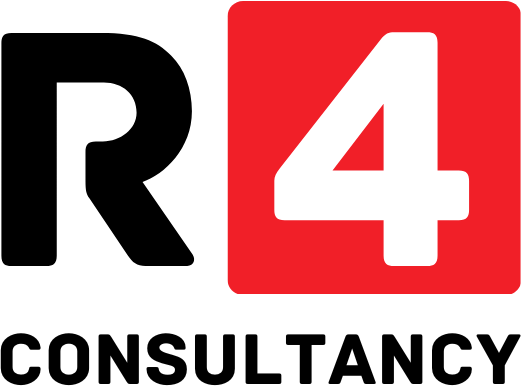
How to Help Your Sales Team Close Deals With Content
As marketers, we spend a lot of time planning, writing, and experimenting with content to grow our audience and get prospects into our sales reps’ pipeline. But that doesn’t mean well-crafted content stops playing a role when we hand those prospects over to sales.
Did you know that reps spend about 15% of their day leaving voicemails? And only 20% of all sales emails are ever opened. This means 80-85% of sales outreach efforts are going unnoticed by those prospects you’ve worked so hard to capture with content.
In fact, research shows that decision makers touch at least five pieces of content before they buy. But only 20% of salespeople actually use content to engage prospects and clients. For marketers, this leaves us with a big question: how do we leverage the content we’ve created to help salespeople bridge the gap, engage more prospects, and close the deal?
Use Content to Land the First Sales Conversation
You only get one shot at a first impression, and content can help you say more in a short window of time. Whether you’re the one landing the first sales call or helping a rep land it, leveraging personalized content can help start that important conversation.
For example, Mobile application NoWait used personalized content as the foundation of their product launch. NoWait’s product allows diners to remotely add their name to a restaurant’s waitlist. Since the company wanted to target the CEOs of restaurant chains, they segmented out the top 30 to target with highly customized content.
The company loaded up personalized videos on iPads and sent them to these CEOs in customized packaging. To date, the app is used in more than half of the companies they targeted.
Here are some other ideas you can try out using content to land that first sales call:
- Build custom landing pages that populate the prospect’s name, company logo, and value props catered to their business needs.
- Host a live workshop that walks through industry best practices and helps troubleshoot common issues.
- Read up on the latest blog posts from your target companies’ blogs. Follow up on a recent content pieces with additional tips and tricks they can leverage.
Here’s an example of a personalized email HubSpot recently sent to some of our contacts database to re-engage them with our content:
Use Content to Get Past the “No”
If a prospect isn’t receptive to initial conversations about your product, it isn’t game over just yet. There are still ways to continue the conversation.
Leveraging content also doesn’t mean just leverage your own content. In “no” situations, you can turn the tables and talk to the prospects about their content instead.
The most enticing sales emails are those that follow up on a personalized action.
For example, consider a sales rep who had emailed you a few times, but you never got around to replying them. After a few emails that went without a response, imagine that they followed up by citing a piece you had written for your brand.
For example:
“I saw that you recently published a piece on the Bitly blog about tracking the ROI of influencer marketing. Is this something your marketing team is interested in exploring and learning more about?”
This is a real example of an email sent to Bitly’s own senior content and community manager, Denise Chan. The sales rep then went on to suggest a follow-up call to discuss some strategies we were currently trying as well as suggestions on how to improve on our tactics.
Content is a valuable tool for nurturing prospects when they’re not quite ready to purchase or aren’t fully convinced yet.
Use Content to Build Relationships with Customers
The average business loses around 20% of its customers each year by failing to attend to customer relationships. And it costs five times more to acquire a new customer than to keep an existing one. Make sure you’re not forgetting upsells and additional sales in your sales engagement process.
Nurture customer relationships by sending content regularly throughout different stages of the customer life cycle. Or try inviting prospects and customers to create content or your next product with you.
Lays’ “Do Us A Flavor” contest is a really fun example of how crowdsourcing can both nurture relationships and improve your product. “Do Us A Flavor” was a year-long social media campaign which invited customers to help choose the next flavor of chip the company would create.
Crowd-sourced contests make customers more engaged and invested because they feel like they’re being heard and they played a hand in creating the product.
The “Do Us A Flavor” contest drove over 14.4 million public submissions, Lay’s brand’s ad awareness increased by 2%, and purchase intent increased by 1%.
Turn Your Customers into Evangelists
Go further with your marketing by turning customers into brand advocates. Then use those brand advocates to help your sales team close additional deals through case studies and referrals.
For example, ClassPass often runs referral deals that include benefits for both the new and current customer:
Think about brands you’re loyal to. What makes you so passionate about the product that you’d want to take the extra step to tweet about them or forward a piece of content you received in your inbox?
Chances are it’s because you trust the brand, you feel valued, or you have an emotional connection with the product.
Start nurturing your customer relationships by trying these techniques:
- Create a referral program that offers an incentive to customers who share your product by word-of-mouth.
- Open a forum, Slack group, or regular Twitter chat that gives your customers a sense of community.
- Open opportunities for customers to contribute to your blog or submit video content to showcase their expertise of the product.
Show Your Sales Team What You’ve Got: Sales Digests
Since sales reps spend most of their days in meetings or on calls, they don’t have much time to search for the most recent content marketing has put together.
Bring the content to the reps right into their inboxes. Repurpose the content from your marketing newsletter into a monthly or weekly sales digest. You can also include general industry content from other publications or companies for a different perspective.
Round up the top performing posts and include:
- Key takeaways and talking points to use in a conversation
- Target audience that would be interested in the piece
- Features or products mentioned in the content piece
A Video Can Say a Thousand Words
In a recent survey, 43% of people reported that they want to see more video content from marketers. And more than half of marketing professionals worldwide cite video as the type of content that drives the highest ROI for them.
Video can be a powerful piece of supporting material at any stage of the sales conversation.
If you’re sending that first email, include a short 30 second video that explains what your product does and why you need to hop on a call to chat more.
If you’ve just wrapped up that first call, follow up with some video case studies and testimonials to keep your prospect excited about the product.
You can also encourage different members of your product and customer success teams to live stream on Facebook and Twitter. Research shows that visual content makes information stick. Win a permanent place in your prospects’ minds and hearts by weaving video content into your communication plan.
Don’t forget personalization! Use a tool like Vidyard to personalize your video messages for your prospects like HubSpot did in this example:
Automate Rep Follow-Through
A recent study found that companies who reach out to leads within an hour of first contact are seven times more likely to have meaningful conversations with decision makers than those who waited even sixty minutes.
But for most companies, it’s not possible for sales reps to keep up that level of outreach. That’s where email drip templates come in handy.
Draft together a few different sets of email drips that either trigger automatically or can be triggered manually by a sales rep.
Here are some examples to get you started:
- Send prospects a follow-up email with a short video demo right after they fill out a demo request. This keeps them engaged while they wait for a sales rep to reach out and schedule a meeting.
- A persona-based email drip for sales reps to send after their first conversation. Tailor the content depending on whether the recipient is a contributor or a decision maker.
SOURCE: Continue reading the full article via https://blog.hubspot.com/marketing/how-you-can-use-content-to-help-your-sales-team-close-deals

